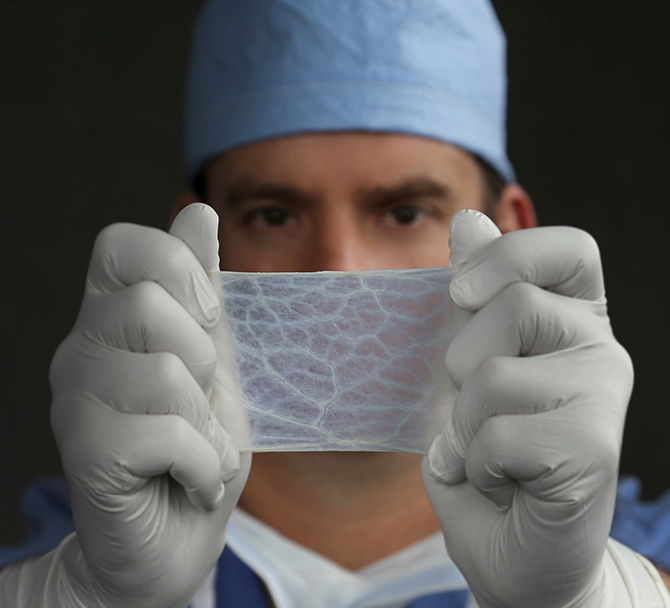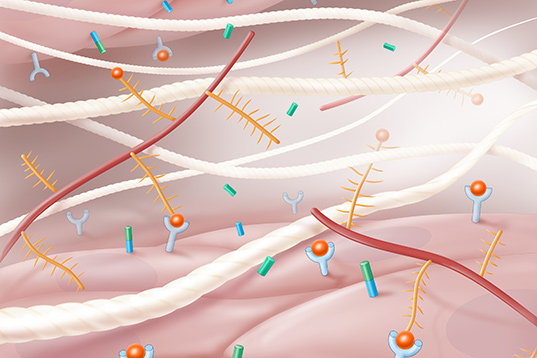DELIVERING ADVANCED TISSUE REPAIR PRODUCTS
Nexsis Biosciences’s advanced tissue-repair products are made of porcine small intestinal submucosa (SIS).
SIS is made of porcine small intestinal submucosa, a naturally occurring ECM located between the mucosal and muscular layers of the small intestine. A complex organization of collagen and other molecules that forms a fibrous matrix, the submucosal layer of the intestine is responsible for most of the ECM strength.
SIS supports site-specific tissue remodeling. As the body heals, SIS is remodeled and integrated into the body, leaving behind organized tissue that provides long-term strength.1-3

SIS SUPPORTS SITE-SPECIFIC TISSUE REMODELING

The open, three dimensional structure of the ECM permits cells and capillaries to grow into the matrix. Cells deliver nutrients and secrete collagen, gradually renewing and reinforcing the site with the patient’s own tissue until completely healed.4
As the body heals, SIS is gradually remodeled and integrated into the body, leaving behind organized tissue that provides long-term strength.1-3,5
SIS has been used to manage multiple types of wounds, including burns, diabetic ulcers, venous ulcers, and trauma wounds. Surgical applications include dura repair, hernia repair, fistula repair, otologic repair, and soft-tissue reinforcement.6
DEVELOPING ADVANCED BIOMATERIAL TECHNOLOGY
Nexsis Biosciences specializes in developing and delivering advanced biomaterials for site-specific tissue remodeling based on our knowledge of naturally occurring extracellular matrices (ECMs).
Our partner, Cook Biotech Inc (now part of Evergen), a pioneer in ECM technologies, develops SIS and continuously improves proprietary processing and manufacturing methods. The goal is to retain the inherent properties of these naturally occurring source materials.


This convergence of nature and technology results in medical-grade devices that help patients overcome serious medical conditions while leaving no permanent material behind.1
REFERENCES
Images sourced from cookbiotech.com unless otherwise noted.
1. Franklin ME Jr, Trevino JM, Portillo G, Vela I, Glass JL, Gonzalez JJ. The use of porcine small intestinal submucosa as a prosthetic material for laparoscopic hernia repair in infected and potentially contaminated field: a long term follow-up. Surg Endosc. 2008;22(9):1941-1946.
2. Stelly M, Stelly TC. Histology of CorMatrix bioscaffold 5 years after pericardial closure. Ann Thorac Surg. 2013;96(5):e127-e129.
3. Badylak S, Kokini K, Tullius B, Whitson B. Strength over time of a resorbable bioscaffold for body wall repair in a dog model. J Surg Res. 2001;99(2):282-287.
4. cookbiotech.com/resource/tissue-remodeling-with-small-intestinal-submucosa-sis-video/
5. cookbiotech.com/resource/biodesign-scientific-monograph-series-booklet/
6. cookbiotech.com
